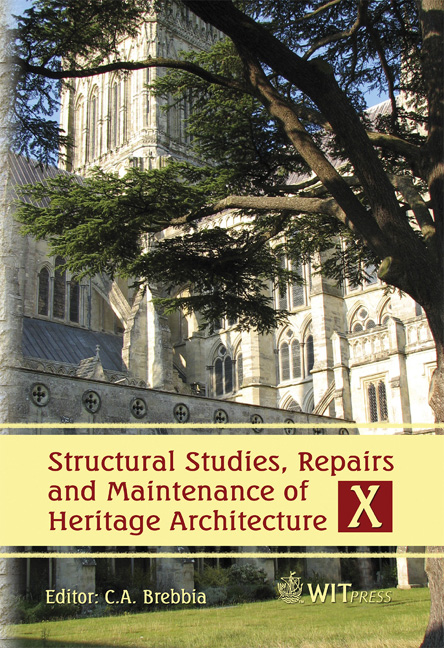Analysis Of The Old Mortars And Proposals For The Conservation Of The Archeological Site Of Logos-Edessa
Price
Free (open access)
Transaction
Volume
95
Pages
5
Published
2007
Size
998 kb
Paper DOI
10.2495/STR070241
Copyright
WIT Press
Author(s)
M. A. Stefanidou & I. Papayianni
Abstract
The site of Logos covers an area of almost 20.000m2 and contains city walls, roads, ruins of houses and warehouses. The building materials used were local stone and mortars. Nowadays, parts of the masonry suffer from demolition and the main reasons for decay seem to be frost, loose joints and bio-deterioration. In the present work the analysis of the building materials is presented. The stone is travertine, a porous nature material, presenting a compressive strength of 1.2MPa and a porosity up to 18%. As regards the mortars, two types were used for the construction: a hydraulic one containing lime and pozzolanic material and a second type based on clay. Based on the results derived from the analysis of the authentic mortars, new compatible ones were proposed emphasizing the usage of local, low-cost materials that are friendly to the environment. Keywords: travertine, mortar, compatible repair materials. 1 Introduction The archeological site of Logos near the modern town of Edessa is a part of the ancient city located in central Macedonia, Greece. The history of the ancient city starts from the Hellenistic period and continues until the Byzantine era. The place was a passage connecting the flat with the highlands of Macedonia (Greek Ministry of Culture [1]). The life of the city was closely related to water as the river Edesseos has formed the landscape on which the city was built and also covered a part of the city with a thick layer of sediments after its evacuation. The river was probably the origin of the raw materials used for construction purposes.
Keywords
travertine, mortar, compatible repair materials.




